Chosen Theme: Fall Hiking Techniques: Mastering the Autumn Terrain
Step into crisp air, golden light, and leaf-slick trails with practical, confidence-building techniques for autumn adventures. We’ll show you how to hike smarter, safer, and warmer this season. Share your own autumn trail lessons in the comments and subscribe for more field-tested insights.
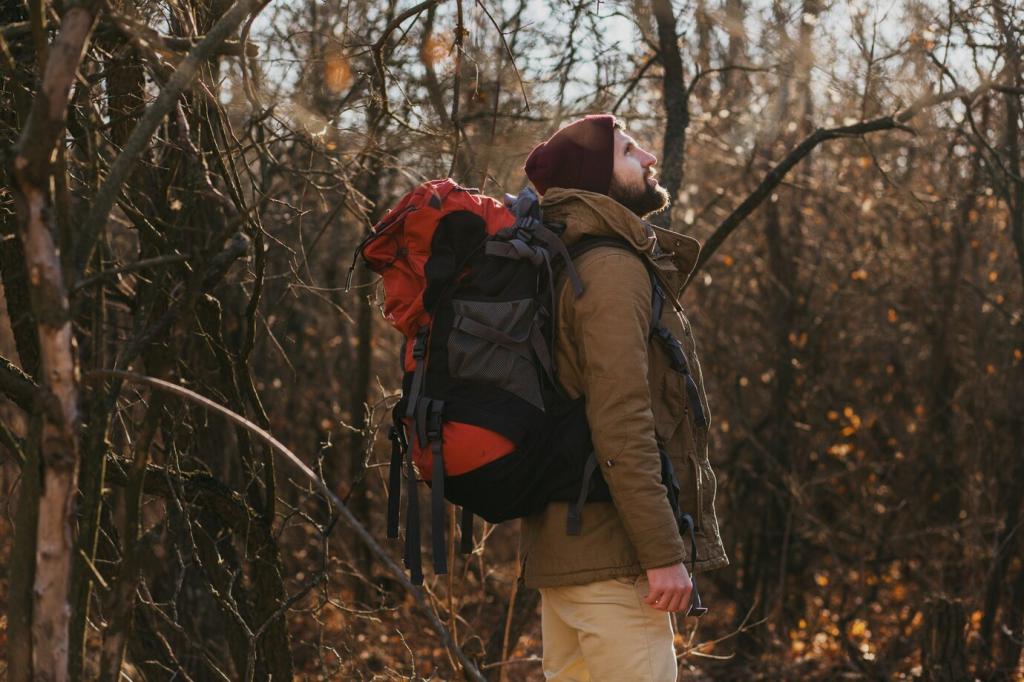
Layering and Pack Setup for Unpredictable Fall Weather
Start with a wicking base to keep sweat off your skin, add a heat-trapping fleece or active-insulation mid, then top with a windproof, water-resistant shell. Prioritize venting options, like pit zips, to adapt quickly when climbing through cold shade into warm, sunny overlooks.

Navigating Leaf-Covered Trails with Confidence
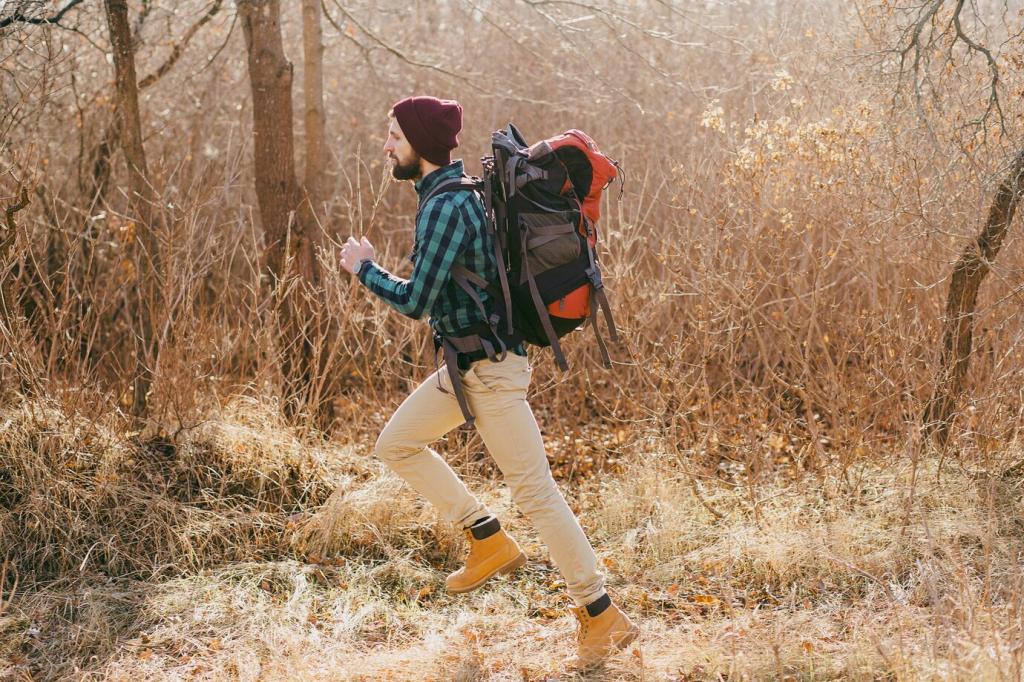
Reading terrain hidden beneath leaves
Look for subtle depressions, parallel scuff marks, and the angle of the hillside to predict where the tread runs under foliage. Maya, a reader, once avoided a turned ankle by spotting raised root ridges beneath beech leaves, proving that patient scanning beats rushing when the forest floor disguises hazards.

Trusting blazes, cairns, and trail architecture
Lift your eyes for blazes, cairns, and cut benches on side slopes that reveal where the trail must continue. Notice drainage dips and rock water bars pointing along the intended corridor. When leaves overwhelm footprints, these lasting features become calm, reliable guides through wind-blown confusion.
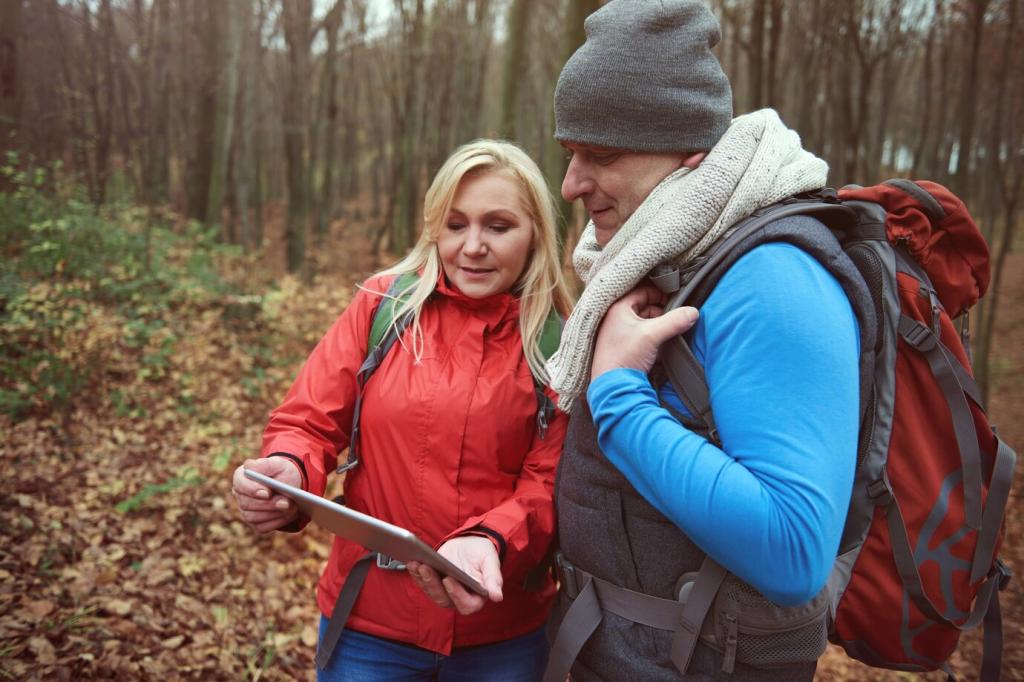
Map, compass, and GPS under a changing canopy
A dense canopy can confuse GPS drift, so anchor digital data with old-school bearings. Pause at intersections to confirm contour lines match the terrain. Mark breadcrumbs at critical points, and screenshot maps for offline use, especially when storms and cold fronts throttle reception and battery life unexpectedly.
Mastering Wet Rock, Mud, and Root Systems
On wet rock, place feet flat to maximize rubber contact, then edge carefully when slopes steepen. Move one point at a time, testing grip before transferring weight. Keep steps short, hips over feet, and eyes scanning two moves ahead to maintain balance and calm breathing through tricky sections.
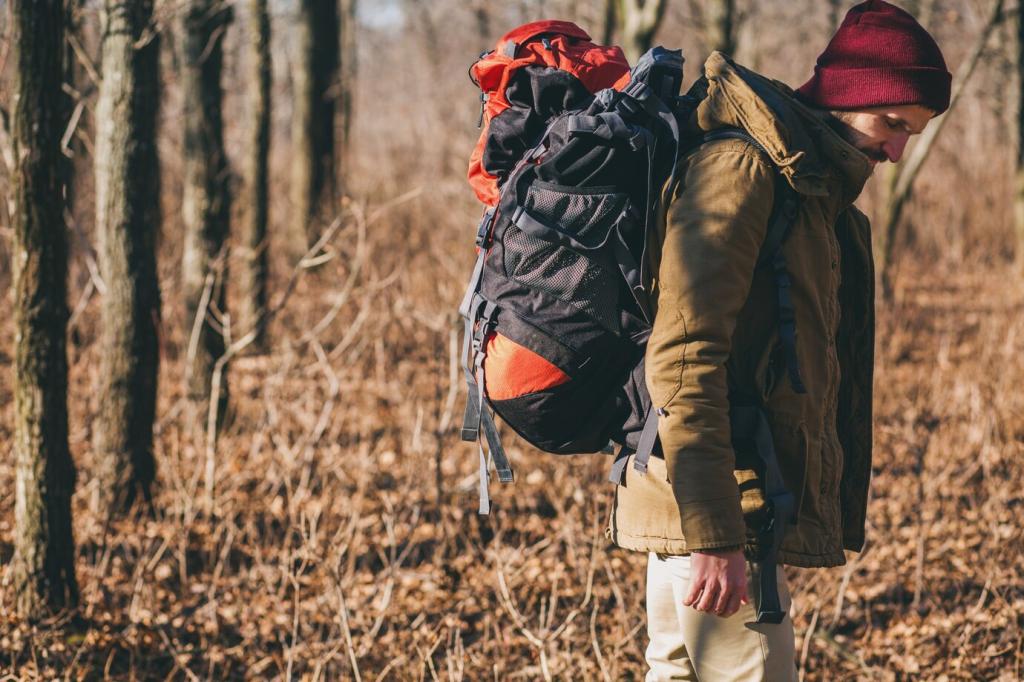
Assessing current, depth, and safer alternatives
Scan upstream for braided channels and wider sections where current slows. Use a pole to probe depth and substrate texture. If water rises above knee level or your gut says no, reroute. A thirty-minute detour often saves hours of freezing discomfort and a story you’d rather not tell.
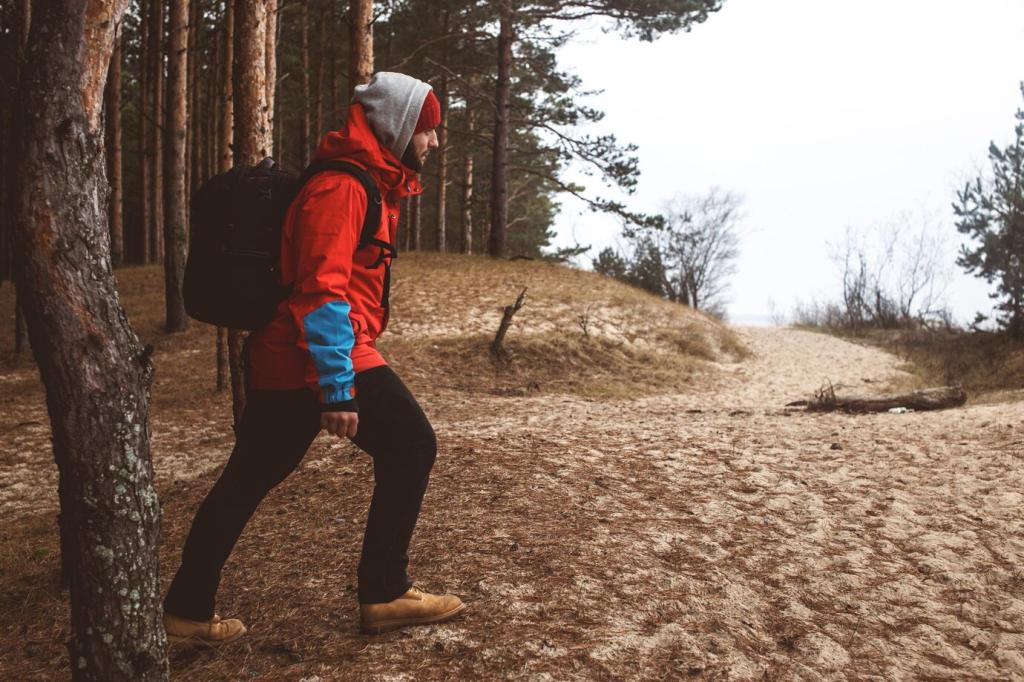
Rock-hopping and pole-assisted steps
Test each stone before committing, checking for wobble and slime. Keep hips centered over your stepping foot, and plant poles downstream for bracing. Move rhythmically, not hurriedly. Practicing on small creeks builds muscle memory that pays off when meltwater or autumn rains raise the stakes unexpectedly.
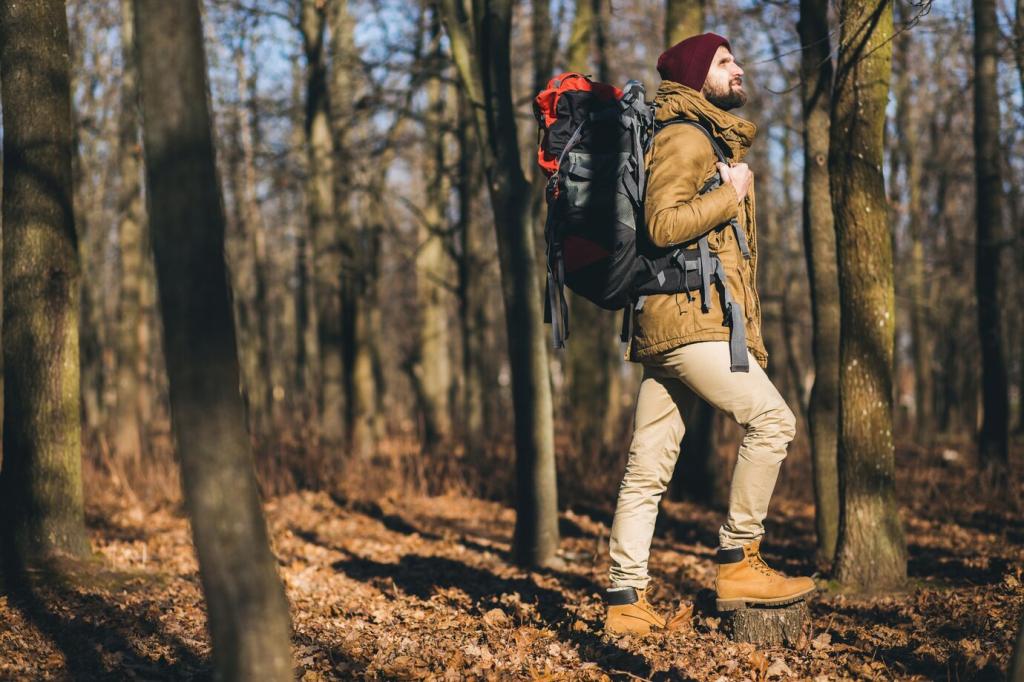
Keeping feet warm despite splashes and frost
Pack a light towel, spare socks, and a thin vapor barrier if temperatures plummet. Consider neoprene socks for frequent fords. After crossings, dry skin quickly to preserve warmth. A thermos of tea turns shivering into laughter, especially when geese overhead remind you migration season waits for no one.

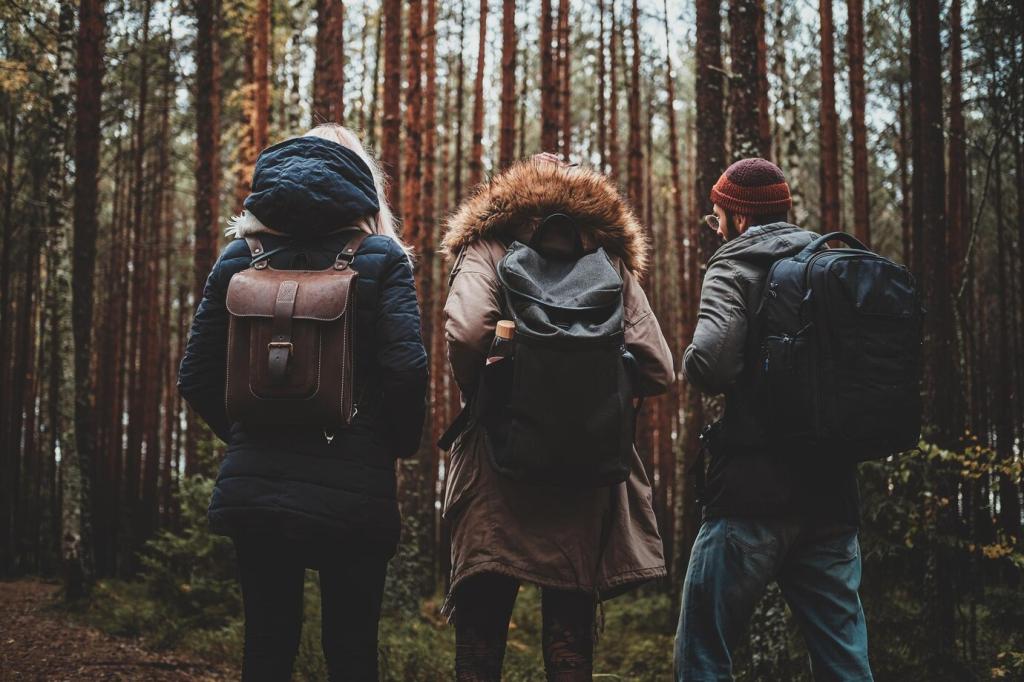
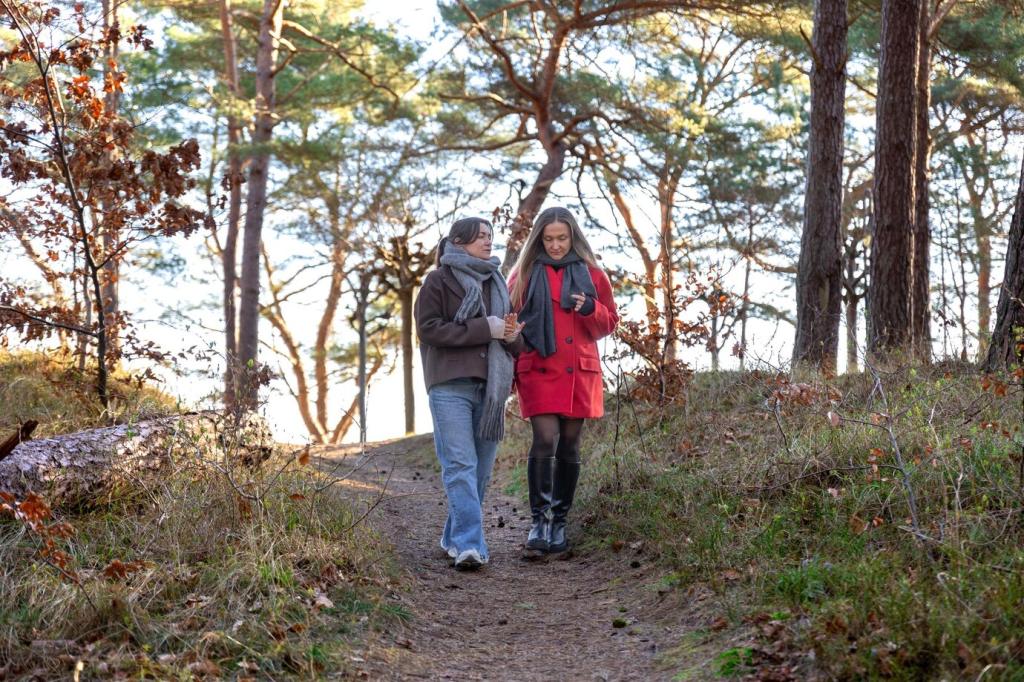
Fill an insulated bottle with ginger tea, cocoa, or broth to warm core temperature and mood. Sipping regularly maintains dexterity when wind bites. Flavor matters too—if you enjoy it, you’ll drink it. A warm ritual transforms gray, gusty ridgelines into cozy interludes of thoughtful, restorative calm.
Fueling and Hydrating for Cool-Weather Efficiency
Front-load a solid breakfast, then snack every forty-five minutes with fats, carbs, and a pinch of protein. Small, frequent bites stabilize effort and reduce chills. Keep pocket snacks accessible so you fuel without stopping, especially on exposed traverses where wind punishes long, idle breaks mercilessly.
Fueling and Hydrating for Cool-Weather Efficiency
Pack a heat-reflective bivy, compact headlamp, repair tape, lighter, fire starters, and a map-compass combo. Add a spare wool hat and thin gloves. These small items shift outcomes dramatically when fog thickens, rain cools, and the last miles stretch further than daylight generously allows.
